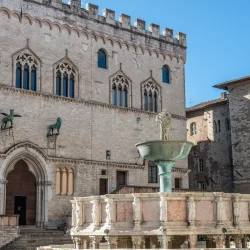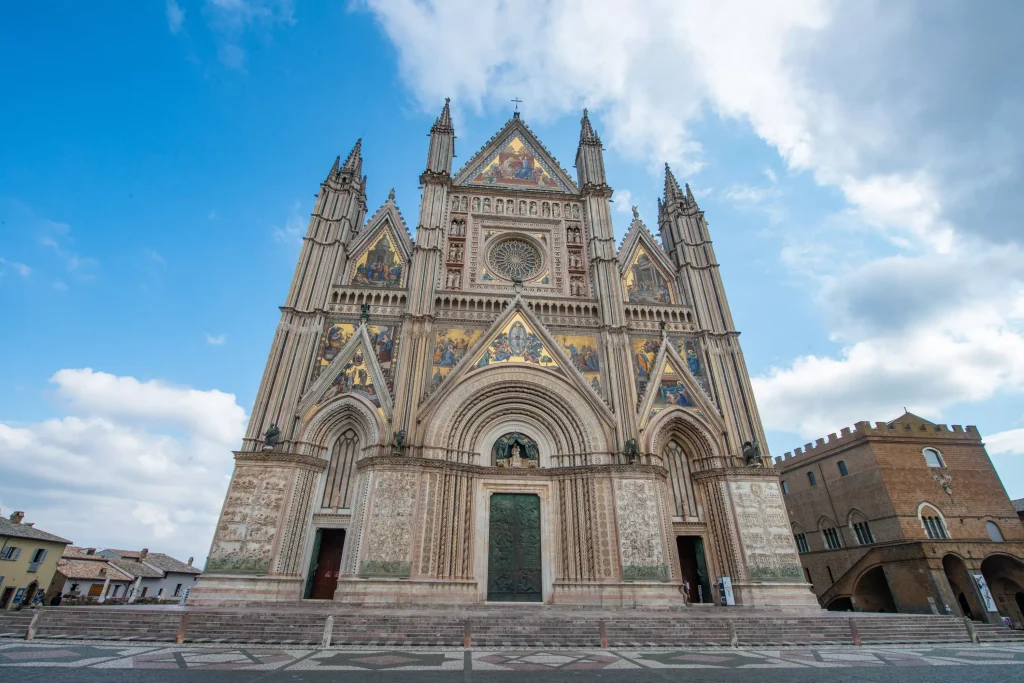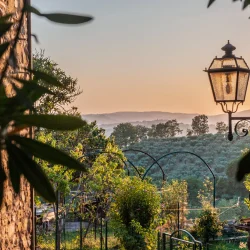
Orvieto cathedral, a pearl of Umbria not to be missed.
Umbria is a region full of history and charm, as it was a key player in the time of the Etruscans and the medieval Renaissance.
It therefore contains many small towns and ancient villages where you can savour the flavour of times gone by, and be enchanted by breathtaking views and millenary buildings.
Orvieto is definitely on the list of Umbria’s pearls to be discovered, being one of the oldest towns in Italy; located on a tuff cliff overlooking the valley below, overlooking the river Paglia, Orvieto’s foundation dates back to Etruscan times, where it played a vital role as a communication hub with other settlements.
In the course of history it was then occupied by the Goths, Byzantines and Lombards, and during the medieval period there was an important economic and artistic development in Orvieto.
Visiting Orvieto therefore means being confronted with traces and testimonies of different populations of the past, which have made the city a sort of open-air museum in which it is enchanting to wander.
Just think of the medieval quarter, the well of San Patrizio or the many splendid churches built in different historical periods.
The main attraction is the splendid cathedral, the monument that best represents the atmosphere and spirit of the city.
The façade of Orvieto’s Duomo
The Duomo, or Basilica of Santa Maria Assunta, is Orvieto’s main place of Christian worship, as well as being one of the most beautiful cathedrals in the world; there are few buildings that can boast the marvellous splendour of a fully decorated façade, and inside chapels as beautiful as the Chapel of the Corporal and the Chapel of San Brizio.
The history of Orvieto’s Duomo began in 1290, when both the Church and the city decided to build a large cathedral to replace the dilapidated Churches of Santa Maria and San Costanzo, and the initially Romanesque style, presumably dictated by the architect and sculptor Arnolfo Di Cambio, later turned to Gothic thanks to the contribution of Giovanni di Uguccione.
Given the very long period that characterised the completion of the work, there were many master builders who followed one another in directing the work, yet the final result denotes harmony and balance, with the Romanesque and Gothic styles intertwining to perfection in a riot of statues, spires, colours, portals and bas-reliefs.
The mosaics on the façade depict the Virgin Saint Mary of the Assumption to whom the work is dedicated, while the rose window, formed by a repeating circle with arches winding together, represents the central point and focus of the structure.
The bronze sculptures decorating the façade symbolically represent the four evangelists, and the four spires of the Cathedral rest on corresponding splendid bas-reliefs depicting moments of great importance to Christianity, such as Genesis and the Last Judgement.
The interior of Orvieto Cathedral
The interior of the Duomo of Orvieto is in a style that is only apparently austere, as the marble used to build it succeeds in making the environment spacious and bright.
The cathedral consists of three naves, and the presbytery is the most decorated part, and interesting to see. Also noteworthy is the fabulous pipe organ.
The cathedral contains authentic gems inside: the Chapel of San Brizio, also known as the Cappella Nova and dedicated to the city’s patron saint, is adorned with frescoes by the master painter Luca Signorelli, and unlike the rest of the cathedral it is entirely frescoed and decorated, creating a sight of unparalleled beauty.
In the centre is a sumptuous altar containing the Madonna of San Brizio.
The Captain’s Chapel is also noteworthy, as it holds the sacred linen stained with the blood of Jesus during the Miracle of Bolsena.
Visits to the cathedral are permitted from 9.30 a.m. to 5 p.m. from November to February, until 6 p.m. from March to October, and until 7 p.m. from April to September; the hours may change due to worship requirements.
The €5 ticket also allows you to visit the Museo dell’Opera del Duomo, and the Palaces.
Children under the age of 10 and residents of the diocese of Orvieto and Todi can enter free of charge.
Tours in Orvieto, things to see
Apart from the Duomo, however, there is much more to see in Orvieto, such as St Patrick’s Well, a masterpiece of ingenuity commissioned by Pope Clement VII to ensure a continuous water supply to the city. Dug more than sixty metres deep, the well in fact reaches the water that lies beneath the cliff where Orvieto rests.
One thing that cannot be missed is a tour of the underground city, a labyrinth of over a thousand tunnels once buried by a landslide and recently brought to light, and finally, it is impossible not to mention Piazza del Popolo.


